When it comes to selling, you have to play the long game.
If someone mentions the word “sales,” you likely envision a silver-tongued rep whose quick thinking, hand shaking, and charisma have the power to close even the toughest of deals. This skill set is incredibly valuable — though seasoned professionals know that at its core, selling is a science rather than a game of chance.
Selling effectively, efficiently, and regularly requires a degree of project management, data analysis, and collaboration that’s often at odds with the flashy stereotypes of the sales industry. Carefully designed and refined practices are at the center of every successful team.
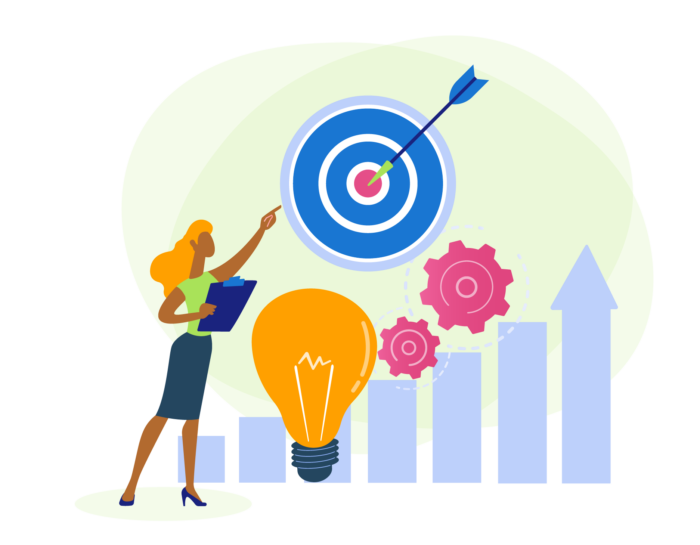
Sales pipelines — also known as customer relationship management (CRM) systems for sales — are an essential tool for every type of company, entrepreneur, and service provider to organize and systemize leads, conduct outreach, and close deals.
Here are some of the biggest benefits of a sales pipeline.
Generate more revenue
In 2015, the Harvard Business Review concluded that companies with a formalized sales strategy generate more revenue than those without. The study found that adopting well-defined processes, educating salespeople and managers on their principles, and continually tweaking these processes could increase the organization’s revenue by at least 28 percent.
Organize work and monitor progress
Sales pipelines are similar to product roadmaps. Both provide a way to set goals and milestones, and to plan the steps to achieve them. An effective sales strategy will clarify each stage of a team’s sales process, illustrate what stages leads are in, and showcase what actions are needed to move leads forward.
Ensure proper budget and resource allocation
Effective sales pipelines clearly outline where every lead is in the sales process, and the data they contain reveal how effective the existing strategy is. This allows a company to appropriately budget funds and resources toward the sales process and keep work as streamlined as possible.
Refine processes
Analyzing conversion data indicates what stages of the sales pipeline are most or least effective, empowering a business to refine its sales processes and remove stages that aren’t performing. This saves time and money, resulting in new strategies that may generate even greater profit.
Make more accurate sales forecasts
Sales pipelines feature clear and transparent data, allowing for more accurate sales and revenue forecasts. Even better, they outline exactly what stage each lead is in and how long it may take to convert to a sale.
This information is incredibly useful to other teams and departments within an organization because it provides insight for budget planning.
As you can see, sales pipelines and CRMs are incredibly important tools for organizing and streamlining your sales process and bolstering revenue. But to effectively build a pipeline for your organization, you need to understand exactly what goes into creating one.
In this guide, you’ll learn
- What a sales pipeline is, how it can benefit your organization, and how it differs from a sales funnel
- Sales funnel stages and strategies for capturing and qualifying leads, as well as tips for conducting product demos, writing proposals, generating conversions, and closing deals
- How to build a sales pipeline from scratch, define customer personas, identify ideal prospects, assemble contacts and profiles for both warm and cold outreach, and set clear and achievable revenue goals
- Sales pipeline management, along with why and how to prioritize leads; plus, tips for recordkeeping and data analysis, determining sales lead value, and helpful CRM software features
Creating an effective sales pipeline is the best way to organize your sales team, streamline work, and increase revenue.
What is a sales pipeline?
A sales pipeline is a system that breaks down your sales strategy into stages and outlines the methods for moving leads through these stages until they convert. A pipeline should incorporate all activities that a company or organization undertakes to generate new revenue. It can be as loosely tied or fully integrated with marketing as you deem fit.
While it’s similar to a product roadmap, a sales pipeline optimizes the work and complex processes that feed into generating leads and closing deals rather than managing a project.
A sales pipeline can keep a busy team on the same page and allow for easy and accurate revenue projections. It depicts the number of potential customers in the works and how soon they might convert.
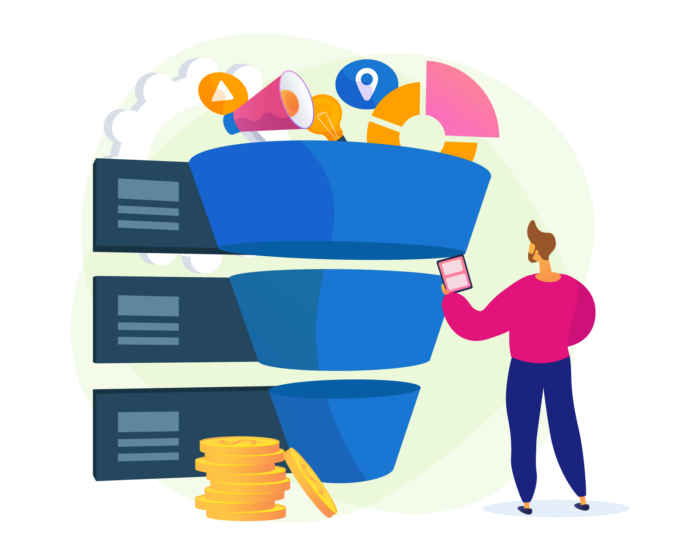
Below are some of the characteristics of a great sales pipeline.
1. Narrative
Like a product roadmap does for product development, a sales pipeline tells the story of the sales process. Some sales pipeline CRMs will even lay out this process in colorful charts and diagrams. These visuals highlight the different types of leads and can even illustrate who these leads are at an individual level if a team wants to go into that much detail.
A sales pipeline lays out the stages of the sales process in a clear format from beginning to end — which is either the sale or the continued maintenance of an account, depending on what sort of product or service you’re selling. The stages are often depicted in the shape of a funnel, indicating the narrowing of interest from general lead outreach to those who finally buy.
2. Clear
Sales pipelines clearly define what each stage of the sales process is so that the level of engagement, the strategy, or the next steps are obvious to whoever is looking at the pipeline. A sales pipeline can also include details about the number of leads in each stage or even individual profiles.
3. Actionable
A well-designed sales pipeline outlines what steps the sales team should take during each stage. For example, when a potential customer has indicated their timeline and budget, and narrowed down their choice between you and a few competitors, the process of closing the deal can be put into a series of next steps, such as “show product demo” or “offer trial period.”
4. Adaptive
Outlining what actions to take during each stage of the sales process enables decision-makers to determine which strategies are most and least effective at moving leads into the next stage, based on what has the highest conversion. A great sales pipeline will also be adaptive based on data and feedback so that teams can update and refine the strategy over time, and easily communicate changed strategies to stakeholders.
Sales pipelines vs sales funnels
Sales pipelines and funnels are used interchangeably in the marketing and sales worlds. When discussing and comparing the two, it’s not a matter of choosing one or the other. Instead, it’s about understanding the characteristics of each and how they fit into your larger goals.
A sales funnel is the pathway from product introduction to final sale — all from the point of view of the buyer. This is generally where the marketing side of an organization is most involved as it directly relates to advertising and content.
One example of a sales funnel would be a Facebook ad that leads to a landing page and then to a signup page for a free webinar, resulting in a direct sale of a product or service. Another example could be a blog post that links to a product demo, which then leads to a direct sale. Whenever you see a pre-roll ad on a YouTube video, this is usually the first stage of a long and meticulously designed sales funnel.
There are endless ways to structure the content and strategy of a funnel. Part of your sales pipeline should closely analyze all content used at each stage of the funnel to determine how valuable and effective it is. If the majority of leads drop off after a particular landing page, for example, that might be a sign that the content of the page needs to be altered or eliminated.
Compared to a sales funnel, the sales pipeline is best thought of as the back end or behind-the-scenes steps that the sales team takes to move leads through the funnel. It’s about the actions used to generate leads, qualify them, and ultimately close a deal.
Why a good sales pipeline is so important
For a long time, conventional wisdom in sales has been that you need a high quantity of leads to generate a minimum number of sales. Some sales managers even believe that to close 100 deals requires at least 300 leads.
The sales pipeline model has replaced this conventional wisdom with a process that’s more streamlined, precise, and focused — putting sales teams in the driver’s seat of revenue generation instead of scrambling for as many leads as possible.
Sales funnel stages
A sales funnel serves two purposes. First, it’s a metaphor for the sales process itself: wide at the top to capture prospects and growing narrower in each stage as those who aren’t the right fit for your product or service lose interest and drop out. Eventually, those remaining in the increasingly narrower funnel come out the other end as full-fledged buyers.
Next, the funnel gives marketers and salespeople a structure to design that filtering process. It’s the actual journey that your potential customers take, from the ads they watch to the informative newsletters or landing pages they read, to the meetings they have with your team as they weigh their options.
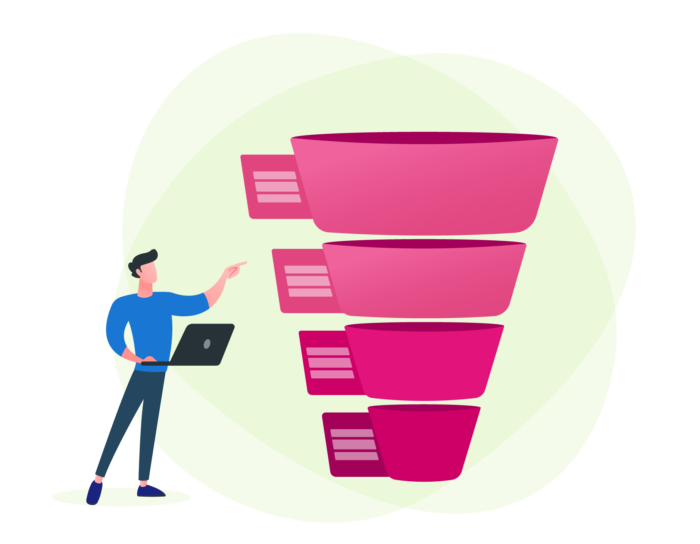
Improving your sales funnel efficiency should be one of your top priorities. More targeted and precise content that engages your customers appropriately at each stage will produce more leads that convert to sales, with less effort and uncertainty along the way.
According to Salesforce and Pardot, a whopping 79 percent of initial marketing leads never convert into sales. That’s a lot of wasted time and effort.
Optimizing your sales funnel will take some trial and error — but refining it to communicate your unique value proposition at each stage is incredibly worthwhile, resulting in larger and more consistent revenue for your company.
Each sales funnel is unique to a particular business, product, or service, but there are overall guidelines that can help you build the perfect funnel for your niche. Let’s look at the big picture stages that are part of every successful sales funnel and discuss some of the elements you might find in each of them.
The prospecting stage
The prospecting stage includes gathering leads and making initial contact. This can be active or passive. Successful sales and marketing teams will usually do both.
Examples of active lead generation include
- Trade show appearances
- Networking at events
- Cold calling
- Cold emailing
- Direct advertising in magazines, television, radio, search engines, and social media platforms
Passive prospecting strategies include
- Improving SEO
- Publishing blogs
- Posting on social media platforms, such as LinkedIn, Facebook, Twitter, and Instagram
- Conducting PR campaigns (The outreach for media placement is considered active marketing, but the lead generation from the media audience will passively roll in.)
- Designing and publishing content that allows prospects to stumble upon your company, product, or service while searching for what they need
What every element or strategy in the prospecting stage has in common, however, is that it clearly communicates the value proposition of your company, product, or service so audiences can determine if they’re interested in learning more.
At this point, they can elect to go further down the sales funnel by volunteering more information, such as providing an email address to subscribe to a newsletter.
Just so you know
Jotform has nearly 200 lead capture form templates that you can use for everything from collecting webinar signups to direct sales inquiries.
The qualifying stage
The qualifying stage of the sales funnel generally occurs after prospects have self-identified as a party that could benefit from buying your products or services.
One of the best advancements of the digital marketing era is that leads are often semi-qualified simply because they see your content. If someone sees your ad on Facebook for a pool float, it’s likely because they’ve previously searched for pool floats online, thereby increasing the likelihood of clicking on your ad and entering the next stage of the sales funnel. This is much more efficient and cost-effective than advertising your pool floats to a wide audience on the radio or in a magazine.
The real work of the qualifying stage is about further clarifying your value proposition and gauging the prospect’s intent to buy. If the prospecting stage focuses on content and raising awareness, the qualifying stage is about hearing the prospect’s response.
Gather the following information from leads:
- What they need
- Their timeline
- Their budget
- Whether they have the authority to make a buying or greenlight decision
If they’re not ready for the next stage of the sales funnel just yet, a lead can remain in this stage indefinitely, enjoying a company’s newsletter or blog until their need is more immediate. On the other hand, they can opt out of your sales funnel entirely.
Keep in mind: Jotform offers many questionnaire templates to streamline the way you gather information from prospects. They may even inspire lines of questioning that you might not have thought of.
The proposal stage
The proposal stage revolves around engaging with leads and showcasing why your product or service provides a better value than those of competitors.
Here, demonstrate what’s unique or most valuable about your product and what separates it from others on the market. If you provide a service, this stage will include building or deepening a personal connection with a client. This is also an ideal time to walk prospects through a product demo or offer a trial period.
Since you’ve gathered significant information about what your prospect’s needs are in the qualifying stage, you can target your sales strategy in this stage specifically to those needs.
Jotform streamlines the proposal creation process with customizable templates. Prospects can schedule consultations or meetings with a sales team through booking forms or combine the qualifying and proposal stage with a request for proposal.
The closing stage
The final stage of a sales funnel is both the most satisfying and the easiest. The primary tasks here involve signing contracts (when applicable) and collecting payment.
Jotform can help with both. Various contract and agreement PDF templates collect legally binding signatures. Jotform also supports payment forms that integrate with digital payment processors, such as PayPal and Square.
You can customize the closing stage just as you can all of the other stages of a sales funnel. If you want to be more active during this phase of the process, take actions that will potentially generate more revenue, such as incentivizing referrals from new clients with discounts or special deals. Either way, if you’ve reached this point, you can officially say you’ve successfully closed a deal.
How to build a sales pipeline from scratch
Now that you know the stages of your sales funnel, it’s time to build the behind-the-scenes processes that will move your prospects through each stage.
To build a fully functioning sales pipeline, you must identify who your ideal customers are, create a list of contacts for your sales team to approach, set your revenue goals, and define your sales process, which you’ll plug into the sales funnel.
Here’s how to get started.
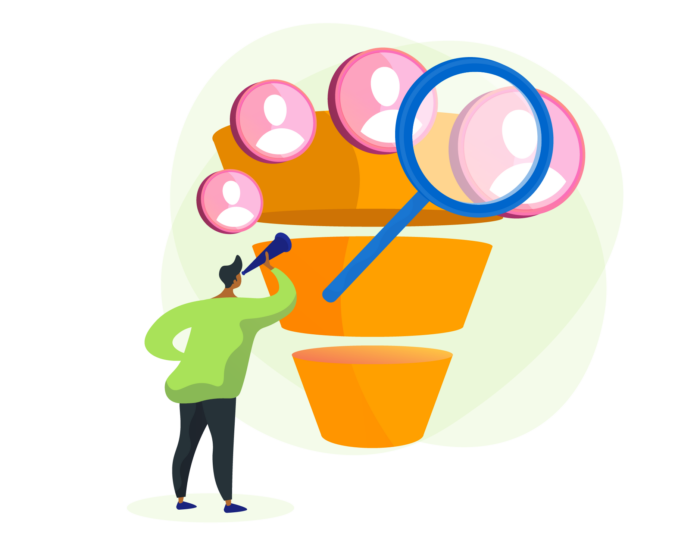
Define your customer personas
To sell effectively, you need a clear understanding of who your ideal customer is. Much of this knowledge is already baked into whatever it is you’re selling. Product developers and service providers wouldn’t have created their offering unless they knew people would buy it. Consult with them for a better understanding of who the target customers are.
From there, you can either move on to the next step of generating prospect contacts or further define your ideal customer persona (ICP).
For business-to-consumer sales, your ICP will include elements like
- Age range
- Gender
- Professional background
- Income
- Region
You can home in on other demographic characteristics related to the product or service as well.
For business-to-business sales, the main components of the ICP are a prospect’s job title and the industry they’re in.
Whether you’re selling to another business or to a consumer, the goal is to understand the customer’s needs in relation to what the product or service can do. Knowing this will help uncover opportunities in untapped markets, which would vastly expand the ICP.
Generate prospective contacts
Once you’ve defined your ICP, you can begin to generate a list of prospective contacts.
This list can come from a variety of sources. Leveraging internal contacts — people your colleagues or your sales team already know — will be crucial because these contacts are more likely to convert into sales. However, you can also generate a list of prospects based on known customers of your competitors or companies or people who comprise your ICP.
For each contact, you’ll need, at the very minimum
- Name
- Phone number
Where applicable, gathering the following additional information:
- Company
- Job title
- Address
We’ll cover how to manage these contacts in the next chapter.
Set revenue goals
The entire purpose of sales is to generate revenue, so knowing how much money you need to make is crucial in planning your strategy and evaluating performance. These revenue goals will impact the shape and scope of your entire sales pipeline and how you prioritize your work.
Let’s say you need to generate $100,000 in sales this year. That means you need to make $25,000 in sales every three months. You’ll likely break this down further into a monthly figure. If your average sale is $5,000, you’ll need to make five sales every three months, or 20 sales per year.
Now that you know how many sales you have to make per year, view your conversion rates, either based on past experience or assumptions. If you have a conversion rate of 20 percent, meaning one in five leads converts to a sale, you can assume you’ll need to move 100 leads through your pipeline over the year to reach your goal.
Of course, you might convert more leads than the average (or less) but knowing how many leads you should have in your pipeline at a given time is another way of measuring success and determining priorities.
For example, if it’s near the end of a quarter and you’ve only made one sale, that’s a clear indicator that some element of your sales funnel needs revamping to increase conversions. Similarly, if you failed to meet your quota last quarter and only have two active leads in the pipeline for the next quarter, your top priority should be to generate more leads.
Establishing sales goals can improve team motivation. You can celebrate each sale in the context of how much more work there is to do to achieve a particular goal. Imagine how different it feels to make a sale when you only need one more to reach a goal, versus making a sale and seeing that you need to make 10 more before you’re in the clear.
Define your sales process
If the sales funnel is the content and pathway that a customer experiences from initial contact to purchase, then the sales process consists of the step-by-step actions that your sales team takes to close a deal. You’ll know your sales process is up to par when you have a high conversion rate, meaning your team can simply follow the steps outlined to reliably close a deal.
Achieving goals is a great morale builder — but before you get to that point, you have to focus on specific actions. That’s what the sales process is.
You can build this process in response to the structure of a sales funnel, or you can build the sales funnel around what you know to be a successful sales process. Often, these two go hand in hand.
The work of lead generation is part of the prospecting stage of the sales funnel. You have to develop and refine the material that best promotes what you’re selling to the ICPs.
Either the marketing or the sales team might create product spec sheets to distribute at trade shows, or the two departments might work together to create a video for Facebook that highlights the best aspects of something you’re introducing to the market. Content creation is a sub-stage of the larger prospecting stage.
During the qualifying stage, the sales team makes a deeper connection with a potential customer. In sales pipeline structures where leads come from ads distributed by the marketing team, the qualifying stage is the first time a sales team interacts with a prospect. The marketing team will prequalify the lead and pass them onto sales for the next stage of the pipeline.
In this stage, sales processes will include actions like sales calls, webinars, product demos, facility tours, and other tactics to engage a prospect and further communicate the product’s value proposition.
However, it’s important to remember that there are many possible roads from initial contact to final sale. For this reason, it’s imperative that your sales process also includes a regular review of results, so you can strategize ways to refine or revamp your process to increase your conversion rate.
You should also regularly clean up data. This includes ensuring your customer profiles are current in terms of contact information, position, place in the pipeline, and feedback, which together will help determine how you approach each person moving forward. Don’t forget to confirm that all sales materials are up to date and present the best value to your leads based on feedback or market trends.
Sales pipeline management
Once you’ve built your sales pipeline, and the funnel has taken shape, the next step is to fill it with leads. This is where the nitty-gritty of selling comes into play — completing sales tasks daily to move leads through the pipeline, and tracking and analyzing the customer journey. Ultimately, you have to make and maintain relationships to close deals.
It will be challenging for your team to generate leads, keep track of their location in the pipeline, follow up appropriately, and assess the success of the current strategy, all while providing up-to-date revenue projections for other departments and stakeholders.
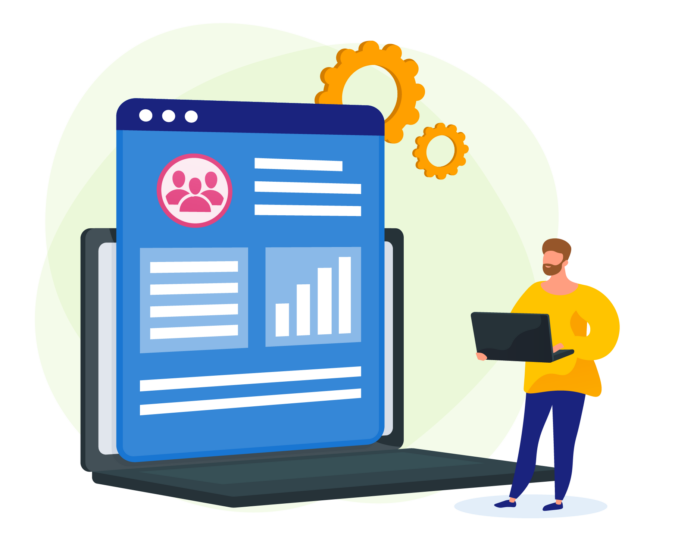
If your pipeline is relatively small and requires only a handful of sales each month, you can probably manage the pipeline manually on an Excel spreadsheet. However, a larger sales pipeline, and a larger sales team, will require a dedicated CRM (customer relationship management) program. CRM platforms are one of the most important tools for successful sales teams.
What to look for in a CRM
There are several options available to sales teams, ranging from free and open source to cloud-based platforms with monthly subscriptions or software that lives on your desktop. Regardless of what type of CRM tool you choose, there are some features you’ll want to make sure the system includes.
Pipeline process and workflow visualization
A good CRM system has a lot in common with product roadmap software. By laying out the sales process in visual terms, it’s easy to understand what’s been done, what needs to be done, and what needs to be adjusted. CRM platforms do this through various layouts, such as calendars with task due dates and pipeline views, which often color-code projects or task types.
Process and task automation
Manual tasks, such as scheduling calls or sending out reminder emails, can eat up serious time. A high-quality CRM allows busy salespeople to automate these processes so they can focus on closing deals.
Collaboration
Solid communication between sales team members is the hallmark of a successful team — and a good CRM makes it easy for everyone to stay on the same page. The ability to tag other team members (even outside the sales department) on a task can greatly improve efficiency and workflow.
Contact syncing
List building is one of the most important aspects of sales, but manual data entry is tedious. A solid CRM will allow users across the team to import contacts into shared databases and eliminate the need to manually consolidate everyone’s information.
Management of multiple sales pipelines
As you refine your sales pipeline, the strategies for selling will begin to diverge into separate pipelines and funnels, based on the specific processes needed to best illustrate their value. That’s why your team must have a CRM that can manage multiple sales pipelines.
Easy team adoption
A sales CRM will only be useful if teams use it. Many platforms are full of bells and whistles most sales teams never touch. However, if your organization doesn’t adopt even the basic features, that’s a sign something isn’t quite right with the platform — at least for your situation.
The job of a CRM is to make your team more successful at selling. Forced compliance with a platform people don’t want to use will do more harm than good for team morale and efficiency. Look for a CRM that’s easy to use across the entire company.
Best practices for pipeline management
No matter how automated or high-tech your CRM platform is, it still won’t do all the work for you. Some programs might use AI to give suggestions based on where leads are in the pipeline or how you’ve set up a funnel. But ultimately, it will be up to you and your team to plot the best course of action.
Here are some tips for managing your pipeline.

Know the value of a lead
Not all the leads you approach are going to convert. So, in the beginning, draw as many potential customers into your pipeline as possible. Moving each of those leads through the sales pipeline will take time and effort, so it’s important to periodically assess how likely a lead will be to eventually convert.
If it’s clear a lead has lost interest, it’s best to know sooner than later, so that your sales team can act accordingly. Once a lead is classified as dead, you can decide whether to remove them from your system entirely or let them continue to passively receive marketing material, without plans for the sales team to reengage with them.
Some CRM platforms offer tools to alert you when a lead has stopped opening emails or other metrics that indicate they’re losing interest. Even if your CRM doesn’t have that kind of capability, it’s important to be aware of lost interest so you can move on when appropriate.
Removing old and dead leads from your pipeline will allow your team to generate new leads and keep your system clean and up to date.
Track the progress of your sales leads
The beauty of a sales pipeline is that it lays out a roadmap for marketers and sales professionals to follow, making it easy to see where each lead is. This type of clarity only happens if you take the time to track lead progress.
At the macro level, knowing how far down the pipeline a lead has progressed will help you better forecast revenue. Remember, the finite nature of the sales process provides parameters that indicate which deals might close and when.
Otherwise, individual lead tracking allows you to zero in on specific engagements and determine how successful your team is at converting. If you notice many leads suddenly drop off or lose interest after a particular action in the pipeline, that might mean something is wrong with the sales strategy.
Above all, this data will be useful for ongoing refinement.
Prioritize your leads
Moving a single lead through a sales pipeline can require significant hand-holding, analysis, and personalized response. When your pipeline is full of leads at various stages, it can be impossible to determine exactly what your priority should be.
You might have closed the deal with a single lead because of a flash of inspiration from a previous conversation. It will be hard to get into that same creative flow while managing hundreds of leads at once. Build time to analyze your sales pipeline, so you can spot opportunities and act quickly. This will help you close more deals.
Some CRM programs even feature AI-enhanced tools that show the health or interest level of a particular lead. You can set alerts for specific signs that indicate you should take advantage of a sales opportunity.
Keep detailed records of contact information and interactions
Obtaining a lead’s contact information is a fraction of what you need to know about them to close a deal. Successful sales teams build full profiles of their leads, even recording the individual interactions and their outcomes. This information enables you to analyze the results and create a better strategy in the future.
Use your CRM’s reporting feature
Many CRMs offer a reporting feature to break down pipeline data into digestible formats, providing you with a clearer understanding of your strategy’s performance.
Even better, these CRM-generated reports are virtually automatic, so you can easily empower your team with crystal clear information without wasting time putting the data into a presentable format.
Don’t let the pipeline go dry
Sales pipelines function best when they’ve got a steady stream of leads flowing in. Don’t get so caught up in managing the leads already in your funnel that you forget to add more leads to it.
Include a step in your management processes that involves lead generation, whether that be through new outreach initiatives or advertising strategies.
Conclusion: The evolution of sales into science
If customers are the well that financially nourishes your company, a sales pipeline is the structure and strategy you use to draw from that well consistently and reliably.
Closing a deal is no longer based on charisma — it has become a science, creating order out of the chaos of potential. Sales require focus, so you can home in on the right leads and effectively convey value.
Technology has led to massive changes in the way customers find new products and decide to purchase them. That’s why the concept of the customer journey as a sales funnel is so important. Fortunately, these same technological advances have given companies powerful tools to automate tasks and manage these relationships in a personal yet systematic way.
Now, sales teams are more than just hunters bringing home food. These advances enable companies to take control of revenue management — but only to the degree that a business successfully manages its sales pipeline.








































































Send Comment:
2 Comments:
More than a year ago
This has completely transformed our sales processes! Not only are we consistently closing more deals, but this has also given us the insight and time to look at some of our content and come up with fresh new ideas, including some markets we’ve meant to make inroads into. And now, we expect this to generate even more leads. In the past, this would have caused me a lot of stress, but with our new systems in place, I feel more confident that the work will be manageable and that my team can stay on top of it. Onward to new revenue!
More than a year ago
Thanks for sharing.